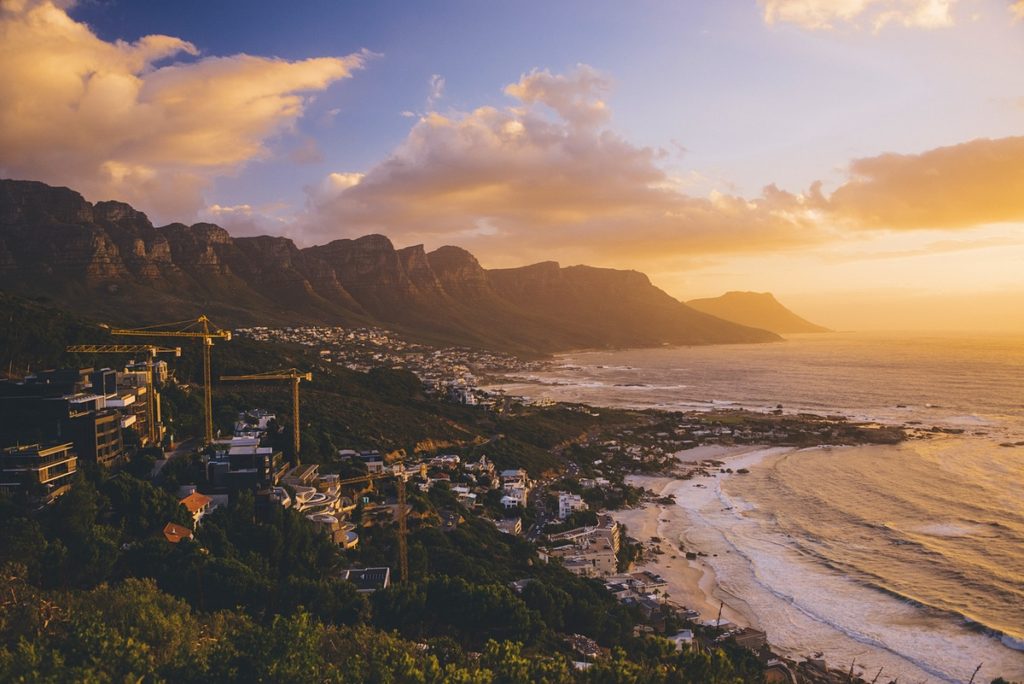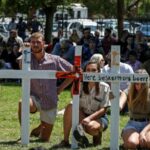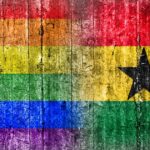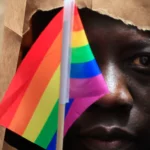By Jonathon Van Maren
My final update from Africa..
****
The Saturday before we left Zimbabwe, we ended up at a little café in Bulawayo to do some work and a giant bearded Aussie came over to chat with us. He owned a restaurant, he told us, and then began to complain about Robert Mugabe. A short time later, he looked hurriedly around the café. “I should watch my mouth,” he said with a chuckle. “Secret police everywhere.”
“And what will they do if they hear you bash Mugabe?” I asked. He shrugged. “I’m white, so they’d probably just push me around or beat me up. But if you’re native Zimbabwean, than it’s worse.” One time, he told us, he’d been on the phone with his brother in Australia, complaining loudly about the Internet services and another things, referring several times to “this stupid country.” Four plainclothes policemen tapped on his shoulder, having heard him through the window, forced him to hang up his call, and demanded to know what he meant. Fortunately for him, they left him alone after a stern questioning.
The regular police are bad enough in Zimbabwe. We got stopped a number of times in several different vehicles—there are roadblocks everywhere and in the most random locations—and each time the police officers tried to conjure some charges out of thin air. They then waited to get bribed, and waved the vehicle on once they’d been paid off. One driver we hired managed to escape paying a bribe by agreeing to give one of the secret police a ride into town.
****
In South Africa, one of the coolest things to see is the penguin colonies of Boulder Beach. I didn’t even know that there were penguins in Africa prior to research before our trip, but the African Penguin—they used to be called the Jackass Penguin—nest and swim and fish by the hundreds, if not thousands, up and down the coast. They dig into the beach and make nests in the bushes along the shore, trying to protect their eggs from the seagulls. It’s hilarious to watch them walk into the water: They plod forward in their little tuxes towards the surf, walking with all the dignity and aplomb of a slightly sauced groomsman. Upon arrival, they suddenly drop to their bellies and are off like a shot, surfing through the waves gracefully.
****
The most nerve-wracking wildlife expedition I talked myself into in Cape Town was cage-diving with Great White sharks. I’m not a water person, but it seemed unwise to pass up what could be my only chance to see a Great White in the wild, in one of the only places on the planet where that was possible. Charmaine found the decision much easier. She headed to a spa instead.
I headed out with a few other tourists on a large cruiser, past rocky outcroppings topped by clusters of cormorants, and started to get a bit unsure of myself when we hit choppy water, climbing up waves like they were steep embankments and then thudding onto the water on the other side of them. “Storm incoming,” the captain informed us. “We couldn’t go out yesterday. Probably can’t go out tomorrow.”
The experience of actually seeing the Great Whites was wild, and even more so because we heard later that several other boats that went out the same day saw none. The crew dangled the severed head of an enormous tuna out into the surf, and when the sharks scented it they came gliding for a closer look. We took turns standing in a metal cage that hung mostly submerged in the surf, and the sleek grey killers thrashed and twisted just beside us, wrenching the tuna from the line it was fastened to. The largest one we saw was just over 3.5 metres long. There was no danger, we were assured, so long as we weren’t stupid enough to hang an arm or leg outside the cage. I didn’t find that much of a temptation, anyway.
Interestingly (to a Dutch-Canadian, anyhow) was the old skipper in charge of the company, a weathered Afrikaaner who seemed to immensely enjoy seeing the downside of nearly everything. As we were chatting, I noticed his nametag: Anthony Tromp. “Are you by any chance related to the Dutch Admiral Cornelis Tromp, the one who fought with Michael de Ruyter and…”
“And sailed up the Thames and shot the crap out of the British? You bet,” he interrupted. It turned out that centuries ago—1688, to be exact—one arm of the Tromp family had emigrated to South Africa. Considering the more recent clash with the British during the Boer War, Anthony Tromp was till quite proud to be able to refer to an ancestor who had once let the English hear the thunder of Dutch guns in the heart of London.
****
We were promised that Cape Town is one of the most beautiful places on earth. We were not disappointed. The view from the top of Table Mountain is gorgeous—on one side, the sky and the ocean fade together in gleaming gold until it is impossible to tell where they meet, while on the other side the shimmering blue stretches out to Robben Island, the centuries-old penal colony where Nelson Mandela was held prior to his ascension to the presidency of the Republic of South Africa. At night, the sky is so clear that you can see right into the moon craters.
****
Growing up, the Cape of Good Hope loomed large in my imagination because it surfaced in every book as the terror of sailors and the bane of explorers. The first European to successfully round the Cape was Portuguese explorer Bartolomeu Dias, who accomplished the feat on March 12, 1488. He initially called it the “Cape of Storms,” and it is still a perilous journey. Shipwrecks can be spotted up and down the peninsula, and rumors persist of a phantom ship, The Flying Dutchman, haunting the coast.
The wind is so fierce on the Cape that it slapped us around with malevolent ease, knocking us off balance several times. At one point, it snatched my sunglasses right off my face and tossed them into the bushes. The waves are enormous, surging towards the cliffs with raw power and pounding themselves into a rabid froth against the rocks. Despite the weather, standing on the very tip of the continent, jutting out to where the waves and the spray and two oceans meet is an exhilarating feeling.
***
In Cape Town, Charmaine and I visited the District Six Museum, which sits at the edge of what was once District Six, originally a vibrant, multiracial community that was infamously razed to the ground after the apartheid government of South Africa declared the land “for white use only.” The forced removals—which amounted to deportations—began in 1968, with over 60,000 residents, most leaving with only a suitcase, sent off to areas reserved for whichever racial group the government had categorized them as. The most heartbreaking aspect of the story is that the racial categorizations—usually either “white,” “coloured,” which was non-black, or “black,” which was generally considered to be native African, were strictly enforced to the point of tearing families apart. Interracial families were forcibly separated and disallowed by law to live with one another—spouses often had to get passes from a police station to gain access to their husbands or wives who had been resettled in other areas. Nothing, in all I’ve read and seen in the last week, has highlighted the stupidity and cruelty of apartheid like wilful and entirely unnecessary destruction of families based on recently-invented policies that made little rational sense to anyone in South Africa besides the small group of hardliners who had conjured them up.
No white people ever moved onto the land, and much of it remains barren to this day.
We were shown around the District Six Museum by Noor Ebrahim, an elderly Muslim gentleman who was born and raised in District Six. The museum is his passion project, and is actually more of a memorial, featuring a motley collection of whatever artifacts he and his friends have managed to dig up as well as scores of photos showing what life in the District used to be. I bought his book, Noor’s Story: Life in District Six, which is his memories of growing up, getting married, and finally, getting evicted and his devastation at seeing the barren lot where his home had once stood. A friendly man, Noor told his story without rancor or bitterness.
****
Nelson Mandela, as you might imagine, is everywhere here: on road signs, on plazas, on every banknote, and on posters. When we arrived at the Apartheid Museum in Johannesburg, they were featuring a special exhibit on his life, which detailed his journey from activist, to a revolutionary at the African National Congress, to his prison days where he began to soften, mature, and develop his beliefs on reconciliation and forgiveness that would transform the transition of South Africa from an apartheid state to a democracy.
And that seems to be what made Mandela extraordinary. After a decade-long struggle defined by institutionalized injustice, police brutality, and scores of state executions on the one side, and bombings, revenge killings, and the horrifying practice of “necklacing”—dousing a victim in petrol, often making him or her swallow some, and setting a flaming tire around the person’s neck to immolate them in agony—on the other side, he demanded forgiveness from both. He refused to give way to an anger that could have destroyed him and made him a rallying symbol for more violence. He had, after all, been imprisoned for 27 years of his life, and bitterness would be understandable. He demanded the release of all political prisoners—not only anti-apartheid fighters, but also white supremacists who had murdered innocent black people randomly and in cold blood. Mandela’s refusal to take revenge was his ultimate accomplishment and gift to South African democracy. Just as in Rwanda, it was the only path towards reconciliation.
We stayed with a retired political science professor in Pretoria, and over a beer I discovered that he had actually been involved in the first round of negotiations between Nelson Mandela and President F.W. de Klerk—he’d met Mandela, and knew de Klerk quite well. The professor agreed that the willingness of Mandela to deny many on his side who wanted retribution was foundational to launching democracy in South Africa. “We have problems, many problems,” he told me. “But we are more free now.”
****
The most impressive site in Pretoria by far was the Voortrekker Monument, an enormous memorial rising out of the grass and surrounded by 64 limestone covered wagons to commemorate the Voortrekkers, or “The Great Trek.” Loading their families, their belongings, their cattle, and their massive Statenbijbels into their covered wagons, the Boer famers and pioneers left Cape Colony in the 1830s and 1840s, searching for a new land where they could live free of British rule. Most of them were descended from the Dutch, those like the Tromp family who had already lived in Africa for over a century, or descendants of the French Huguenot who fled Europe to worship God without fear of persecution.
Prominently commemorated here is the Covenant, which until 1994 was celebrated by a holiday in South Africa called “the Day of the Vow.” The Voortrekkers had been hounded and harried by Zulu warriors for much of their journey, and hundreds of men, women, and children had been slaughtered. A treaty signed between Boer leaders and the Zulus had ended with the Afrikaners being slaughtered at the feast intended to celebrate the agreement. The men had already considered turning back. As a last resort, they decided to make a public vow to God before meeting the Zulu forces—which vastly outnumbered them—in battle one more time. They promised, in a day of prayer, that if God would give them victory, they would build a church and forever honor the Day of the Vow as a holy day of thanksgiving. In English, the prayer reads as follows:
We stand here before the Holy God of heaven and earth, to make a vow to Him that, if He will protect us and give our enemy into our hand, we shall keep this day and date every year as a day of thanksgiving like a sabbath, and that we shall erect a house to His honour wherever it should please Him, and that we will also tell our children that they should share in that with us in memory for future generations. For the honour of His name will be glorified by giving Him the fame and honour for the victory.
On December 16, 1838 at the Battle of Blood River, the unthinkable happened. A mere 470 Voortrekkers defeated a force of over 15,000 Zulu warriors under the command of the chief Dingane. Three thousand Zulus were killed, but only three Voortrekkers wounded. The battle is still celebrated today.
The Voortrekkers eventually settled the areas known as the Transvaal and the Free State of Orange.
****
After a final stop at the home of former South African President Paul Kruger in Pretoria, we headed to our bed and breakfast to pack. I write this in the Schiphol Airport in Amsterdam, preparing to fly home. Thanks for reading along!








